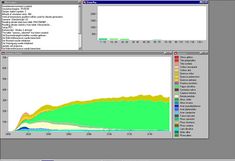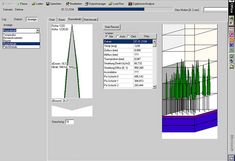PICUS
The PICUS model family
The PICUS model family is based on the patch model approach and comprises the three model variants PICUS v.1.2, PICUS v.1.4 and PICUS v.2.0,each operating on a different level of physiological detail. Objectives of model development and applications are inter alia:
- Simulation of forest succession over long time periods under transient climate
- Simulation of equilibrium tree species composition under current climate and climate change scenarios
- Simulation of complex forest management scenarios applicable in multi-species forests under current and changing environmental conditions
- Assessment of carbon-, water-, and nitrogen-cycling in forest ecosystems under current and changing climatic conditions
- Simulation of biotic disturbance regimes (bark beetles) under current and changing climate
- Assessment of the rock fall protection function of forest ecosystems under different management regimes
Since the beginning of the development of PICUS at the Institute of Silviculture some 10 years ago the model permanently has been enhanced and modified under the auspices of Prof. Manfred J. Lexer. Others involved in model building and application are Dietmar Jäger, Werner Rammer and Rupert Seidl. The individual models are implemented in C++ and provide a graphical user interface (GUI) for optimal user interaction (Figure).
PICUS is currently applied at the Institute of Silviculture, BOKU Vienna and the Institute of Forest Ecology, ETH Zürich - if you’re interested in the program package please contact Manfred J. Lexer (email: mj.lexer(at)boku.ac.at).



